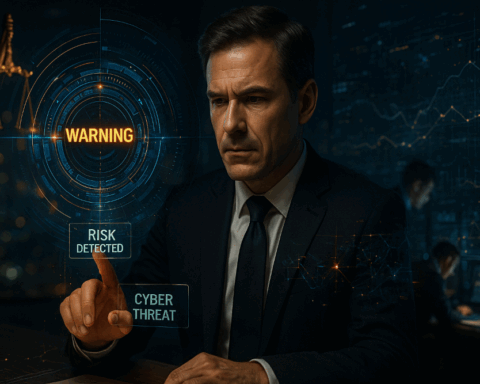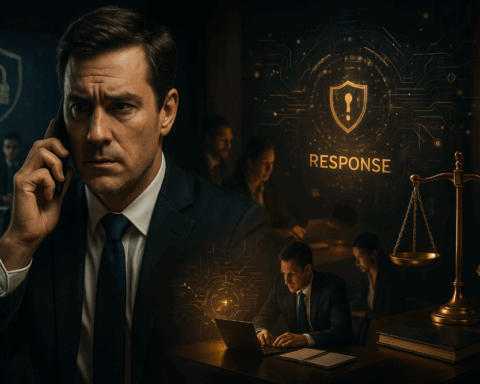Incident response and organizational resilience are crucial pillars for national and international enterprises, their directors and supervisors, as well as government agencies facing serious allegations of financial and economic crime. Such allegations not only disrupt daily operations but can also severely undermine stakeholder confidence and cause lasting damage to the organization’s reputation. In this context, an effective incident response process is indispensable—not only to swiftly and adequately manage the immediate crisis but also to strengthen the organization’s long-term resilience.
The need for an integrated and proactive approach to incident response is growing in a world where technological advancements and globalization increase the complexity and speed of incidents. Financial and economic misconduct, whether combined with cyberattacks or other forms of fraud, require organizations to have a robust system that not only detects and addresses incidents quickly but also helps the organization recover and withstand future threats. This demands close collaboration among legal experts, operational teams, and communication professionals, with a focus on continuity, transparency, and risk management.
Rapid Detection and Initial Response
The ability to detect an incident at an early stage is a determining factor for the effectiveness of the subsequent response process. By implementing advanced monitoring and analysis tools, suspicious activities can be quickly identified and assessed. This enables organizations to accurately characterize the incident and map the potential scope of damage. Early detection allows for targeted and efficient action, preventing escalation.
The initial response is the critical phase in which the incident is contained and the first actions are coordinated. This requires a clear and pre-established protocol outlining tasks, responsibilities, and communication lines. A structured approach ensures that all involved parties are promptly informed and that measures—such as shutting down affected systems or notifying regulators—are executed without delay. The speed and precision of this phase can make the difference between a manageable situation and an escalation with far-reaching consequences.
Additionally, the initial response is also the moment to assess the broader risk landscape and set priorities. Besides direct technical and legal consequences, attention must also be given to the impact on reputation and operational continuity. An effective first response not only limits damage but also lays the foundation for further recovery efforts and strengthening organizational resilience.
Coordination and Collaboration Across Disciplines
Incident response requires meticulous coordination among various disciplines both inside and outside the organization. Legal experts, IT specialists, communication professionals, and management teams must work seamlessly together to ensure an integrated and coordinated approach. This multidisciplinary collaboration makes it possible to address and manage complex incidents from different perspectives.
Organizing an incident response team that can be quickly mobilized is essential for effective coordination. Within this team, roles and responsibilities are clearly defined so that decision-making is efficient and duplication of efforts is avoided. The team acts as a central point of contact for all involved parties and ensures streamlined information exchange and decision-making throughout the response process.
Collaboration with external parties such as forensic investigators, regulators, and legal advisors is equally important. This cooperation allows the deployment of additional expertise and resources that strengthen internal response capabilities. Simultaneously, it fosters transparency and trust toward external stakeholders, which is crucial for limiting reputational damage and ensuring compliance.
Legal Risks and Compliance in Incident Management
In incidents potentially linked to financial and economic crime, the legal risks are substantial, and compliance must always be central. Quickly identifying relevant legal obligations and timely notification of regulators are critical aspects of incident response. Non-compliance can lead to severe sanctions, fines, and further reputational damage, making legal expertise necessary from the outset.
The legal department plays a key role in assessing the impact of the incident on ongoing and future proceedings and in weighing communication choices that serve the organization’s legal interests. Every word, document, and action is carefully considered to protect the organization against liability and to build a solid defense. This cautious approach prevents responses during a crisis from inadvertently worsening the legal situation.
Moreover, it is essential that the legal response is fully integrated into the broader incident response process, with attention to evidence preservation and documentation. This makes it possible to present a consistent and substantiated defense in later stages. Compliance and legal protection thus become an inseparable part of a successful and sustainable crisis approach.
Communication and Reputation Management During Incidents
Effective communication is indispensable in managing incidents involving financial and economic crime. Carefully formulating and aligning messages for both internal and external audiences helps limit uncertainty and speculation. Clear, transparent, and timely communication strengthens stakeholder confidence and prevents further escalation of reputational damage.
Internally, communication should not only inform employees but also support them in what is often a stressful situation. Providing openness about the situation and the steps being taken fosters understanding and engagement, which is crucial for organizational recovery. This requires a well-considered communication strategy that also takes into account the psychological impact.
Externally, communication is aimed at customers, shareholders, regulators, and the general public. The goal is to provide clarity about the facts, the measures taken, and future plans, without compromising legal interests. Through a proactive and consistent communication style, the organization’s reputation is protected as much as possible, and market confidence is maintained.
Recovery and Business Continuity After an Incident
Recovery following an incident with possible financial or economic criminal elements is a complex process that goes beyond solving the immediate problem. It is about restoring operational capacity, strengthening internal processes, and building a resilient organization capable of better withstanding future incidents. Business continuity management is an integral part of this.
Developing a detailed recovery plan is essential for structured and effective action. This plan includes not only technical and operational recovery measures but also monitoring the impact on customers and suppliers and anticipating potential follow-up issues. By prioritizing and deploying resources efficiently, normal business operations are restored as quickly as possible.
At the same time, improving organizational resilience is a fundamental step to prevent recurrence. This means investing in enhanced controls, employee training, and integrating lessons learned into risk management. The goal is to create an agile and robust organization so that future incidents can be addressed more quickly and effectively.
Incident Analysis and Reporting
A thorough analysis of the incident is indispensable for identifying root causes and quantifying impact. This analysis forms the basis for improving processes and preventing similar incidents in the future. Collecting reliable and complete data plays a crucial role in this.
Reporting to internal and external stakeholders must be clear, transparent, and factual. This includes not only an overview of the incident itself but also of the measures taken and their effects on the organization. A well-structured report strengthens the confidence of regulators, investors, and other involved parties and helps to present the organization in a positive light.
Furthermore, the analysis and reporting serve as input for the continuous improvement of the incident response process. By systematically evaluating what went well and where bottlenecks existed, protocols can be adjusted and the team better prepared for future challenges. This contributes to a learning and adaptive organizational culture.
Training and Preparation for Incidents
An organization that is prepared for incidents can respond more quickly and effectively when a crisis occurs. Training and exercises play an essential role in increasing awareness and improving the response capabilities of employees and leadership. By simulating realistic scenarios, experience is gained in handling complex situations.
These preparatory activities ensure that all involved know their roles and responsibilities and that communication channels function well. Exercises also provide opportunities to test procedures and improve them where necessary. Continuous training and evaluation of the response team increase readiness and confidence within the organization.
Additionally, training helps develop a culture in which risk management and compliance are central. By engaging and informing employees, the likelihood of incidents is reduced and a shared sense of responsibility is created. This forms the foundation for a robust and resilient organization.
Technological Tools and Innovation in Incident Response
The role of technology in incident response is becoming increasingly important, especially given the speed and complexity of modern incidents. Advanced monitoring and analysis tools, artificial intelligence, and automation enable faster detection of suspicious activities and adequate responses. Investments in these technologies are essential for a future-proof organization.
Technological solutions provide benefits not only in detection and response but also in data collection and analysis for forensic purposes. This contributes to a detailed reconstruction of the incident and helps strengthen the legal position. Moreover, technologies improve collaboration between different teams through real-time information exchange and transparency.
Innovation in incident response also means continuously evaluating new tools and methods and integrating them into existing processes. This requires a strategic approach whereby technological developments are aligned with the specific needs and risks of the organization. In this way, incident response capacity is continuously strengthened and optimized.
Continuous Improvement and Adaptive Resilience
The cycle of incident response does not end with incident recovery; it is a continuous process of learning, adapting, and improving. Organizations that embrace a culture of continuous improvement develop an adaptive resilience that enables them not only to survive but also to thrive in a dynamic and often unpredictable environment.
This continuous improvement is fueled by regular evaluations, feedback loops, and integrating lessons learned into policy and procedural changes. Through a systematic approach, weaknesses are addressed and strengths reinforced, making the organization better prepared for future incidents. This process requires engagement at all levels and a clear governance structure.
Adaptive resilience also means that organizations can flexibly respond to changing circumstances and emerging threats. This calls for a proactive attitude, innovative thinking, and a willingness to continuously invest in knowledge and skills. Through this mindset, incident response becomes a strategic instrument contributing to the sustainable success and reputation of the organization.















